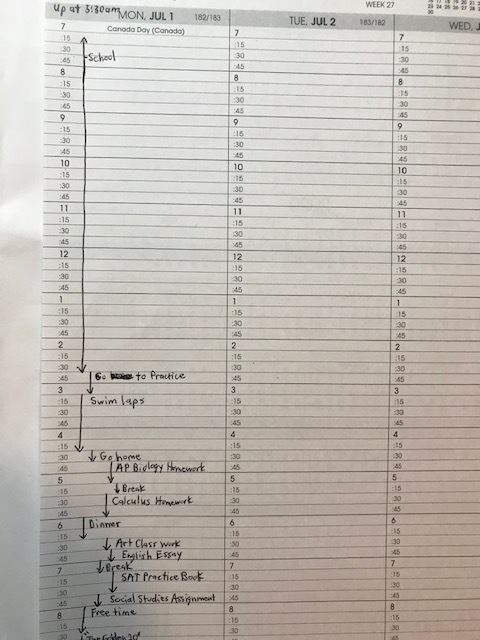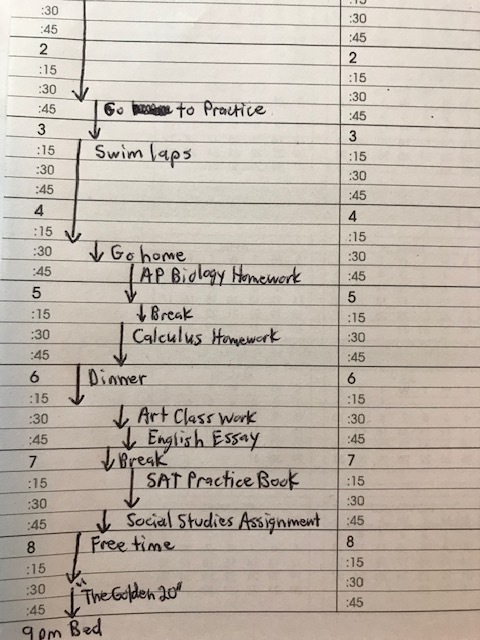Life Hacks: How to Break the Cycle of Procrastination
6 min read•december 22, 2021
Donald D'Orto
Productivity ⏰
44 resourcesSee Units
Again and again, students tell me that time gets away from them with too much to do and not having enough time to do it all. Then, with feelings of discouragement, procrastination fever hits people like a freight train. Before long, late-night cram sessions follow with caffeinated drinks and too little sleep. If you are a student, you know exactly what this story is. What if I gave you the ultimate hack for getting it all done and having a healthy life? A hack that is proven as highly effective by millionaires and great leaders alike. Are you interested? If yes, proceed.
"The Golden 20"
"The Golden 20" refers to a ritual done by top business people, students, and entrepreneurs. I learned from several personal mentors how to do "The Golden 20." You may hear it referred to as the "Golden Hour," the "Power Hour," and countless other names. The best time frames to do the "Golden 20" lie between either before you go to bed or in the earliest time you wake up in the morning before doing anything else.
The "Golden 20" contains four parts:
1. Read a Proper Book
The first step in the Golden 20 is reading five pages of a good book. When we talk about reading a "good book," I'm not referring to either the latest Harry Potter or Delia Owens novel. Instead, look for a self-development book. Good self-development books help you become a better person. Doing this is critical because as Jim Rohn puts it, "(T)o have more, we must first become more." If you read five pages of a great book, it gives you the inspiration you need to succeed tomorrow. If you need help in choosing a self-development book, several great choices include:
- How to Win Friends and Influence People by Dale Carnegie
- The Slight Edge: Secret to a Successful Life by Jeff Olson
- No Excuses! The Power of Self-Discipline by Brian Tracy
- The 7 Habits of Highly Effective People and The 7 Habits of Highly Effective Teens by Stephen H. Covey
- Business Ground Rules: Be Great at Business by Tony Jeary and Peter H. Thomas
2. Review Your Day
The second step of the Golden 20 process is reviewing your day. You can plan using an organizer or planner online and/or offline. You can still do this even if you did not previously plan yesterday or the days before that. Be courageous and review your day with honesty. As you reminisce the things you did today, go over both what you did well and what needs improvement.
3. Write Down These Two Things
The third part of the Golden 20 is simple: reflecting on oneself without harboring any biased judgments. First, write down one thing that you learned today. Usually, this may come either from the self-development book that you read earlier or it could be something you actually discovered as you reviewed your day. Then, write down what will you do differently tomorrow. I encourage you to keep your daily reflections in the same place. A binder, cell phone app or a computer log will help you to keep track of your "two things" each day. Over time, looking over these can help you magnify your personal growth.
4. Plan Your Next Day
Don't wait until tomorrow to change it - start today! Now that you are inspired and you learned the ups and downs of the past day, prepare to plan your tomorrow. Planning your day the night before puts you in control of your goals and how much time you give to each priority. It may seem really daunting when you begin, but it ends up being much easier than you think.
Lay It All Out
First, you will need a daily planner that breaks your day into 30-minute increments. If you dare to overachieve, try a 15-minute block planner. Whether you choose a paper planner, an app on your phone or a computer planner, any of these will work well. I prefer the "At A Glance" Academic Weekly Appointment Book. Use the following planning strategies with an online or app-based planner.
Block Off the Unavoidable
Second, block off all the time that you have no control over. For instance, if you go to school from 7:20 am to 2:45 pm, draw a long line through that period. Mark it as "school" and move on. Likewise, do the same with sleep (aim for at least 7 hours). Add meals and even sports practice as well, so mark those with lines and label them accordingly. You should never study when a teammate kicks a soccer ball at you!

Sample plan - notice how the lines are used.
List Your "Choosables"
Third, make a list of your top priorities. For example, your Calculus or Advanced Placement Biology homework should be high on the list. Anything academic takes high priority. Don't forget to budget time for chores and study time for long-term goals, such as passing your SAT or ACT exam. If important work can be done anytime that day, then those activities can be put on your top priorities list. Those activities will go into the last step. Remember these two points: don't forget to mark off reward times and study breaks when you plan your day, and don't trade the "urgent" for the "important." What does the second point mean? Well, sometimes the tasks that "yell" at us (the urgent ones) are not as important as the "whispering" tasks (long-term ones). Be sure to listen to the whispers, not just to the yelling.

"You should never study when a teammate kicks a soccer ball at you!"
Combine Planning With Inspiration
You read a book to make you a better person, reviewed your past day, and wrote down what you can do better. Now, it's time for your final step: notice the time blocks without any adult-mandated activities. With this, you can wield better control over your life. Take your top priorities list and place the activities into the open time blocks. Plan how long each assignment and/or activity will take; then, place it into a proper spot. As you insert activities, be sure to plan short breaks and a reward for yourself. If you are not sure how to do this, read the Pomodoro Technique or the Flowtime Technique.
Reviews for "The Golden 20"
Over my teaching career, countless students who embrace "The Golden 20" were able to change their lives in amazing ways! Some students benefited most from time management. Others needed the inspiration to rise to the challenge. Another group needed all the above. Students who adopt "the Golden 20" give the right amount of effort to the right priorities. They go from overwhelmed to outperforming their past expectations. "The Golden 20" is an easy, four-step technique designed to empower you towards success. It is both simple to do and not to do.
Is "The Golden 20" For People Like Me?
Once, a student in my class told me about his amazing girlfriend who was found to be brilliant, kind and beautiful by many young men in my class. At the end of the year, I asked each student to write the most important thing that they learned in my class. He wrote that "The Golden 20" changed his life the most for the better. Why? He told me there was only one way that he could convince her to marry him someday, especially with so many talented, handsome and eligible bachelors seeking her attention. His solution: use "The Golden 20" to become a better man... If you find yourself needing to become a better person, as my student did, then "The Golden 20" is absolutely right for you.
For more productivity advice for high school and college students, read through these top Twitter threads from current or former college students that figured it out.
Browse Study Guides By Unit
📚Study Strategies
📓Note Taking
🤘Testing Tips

Fiveable
Resources
© 2023 Fiveable Inc. All rights reserved.